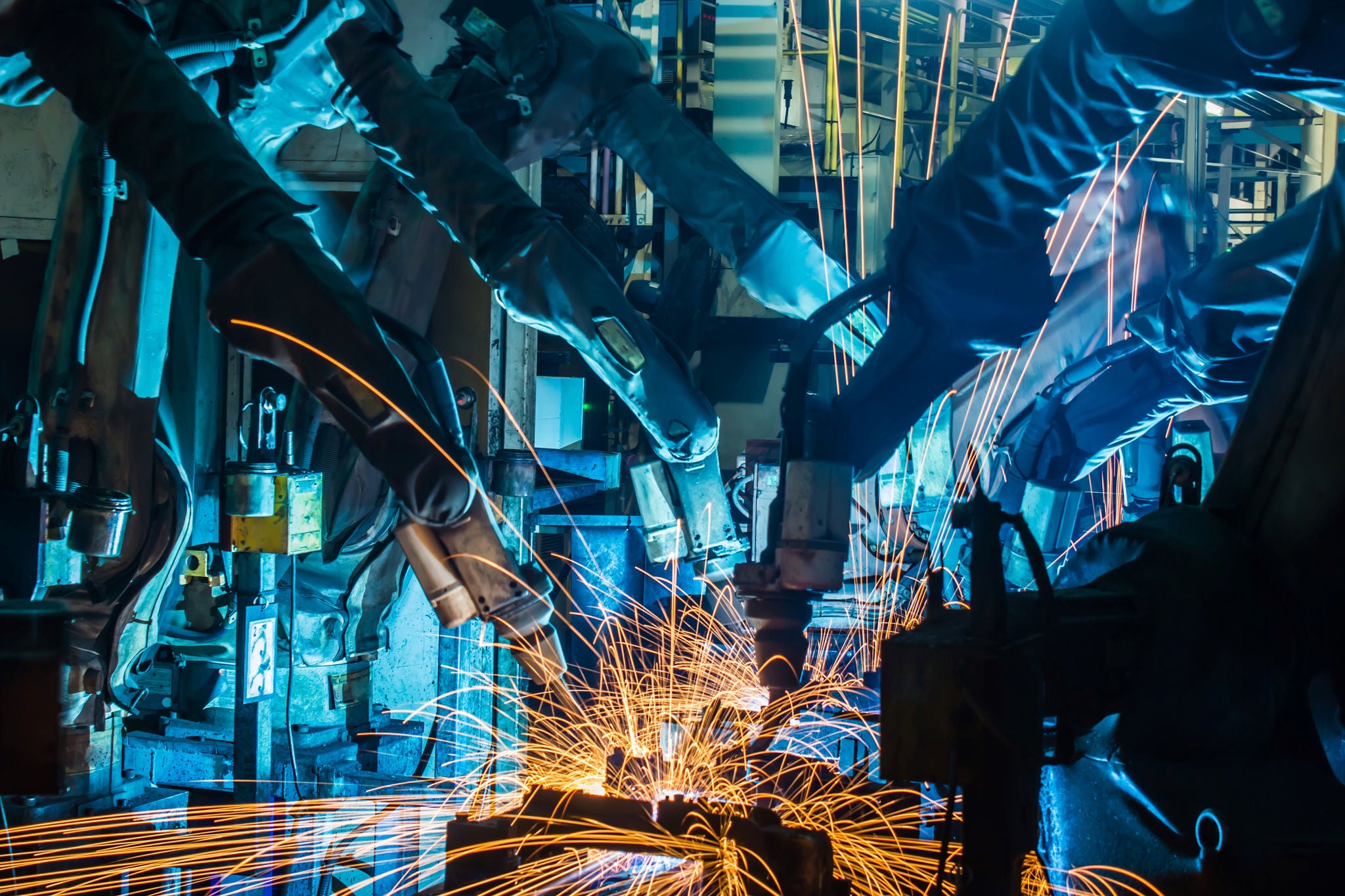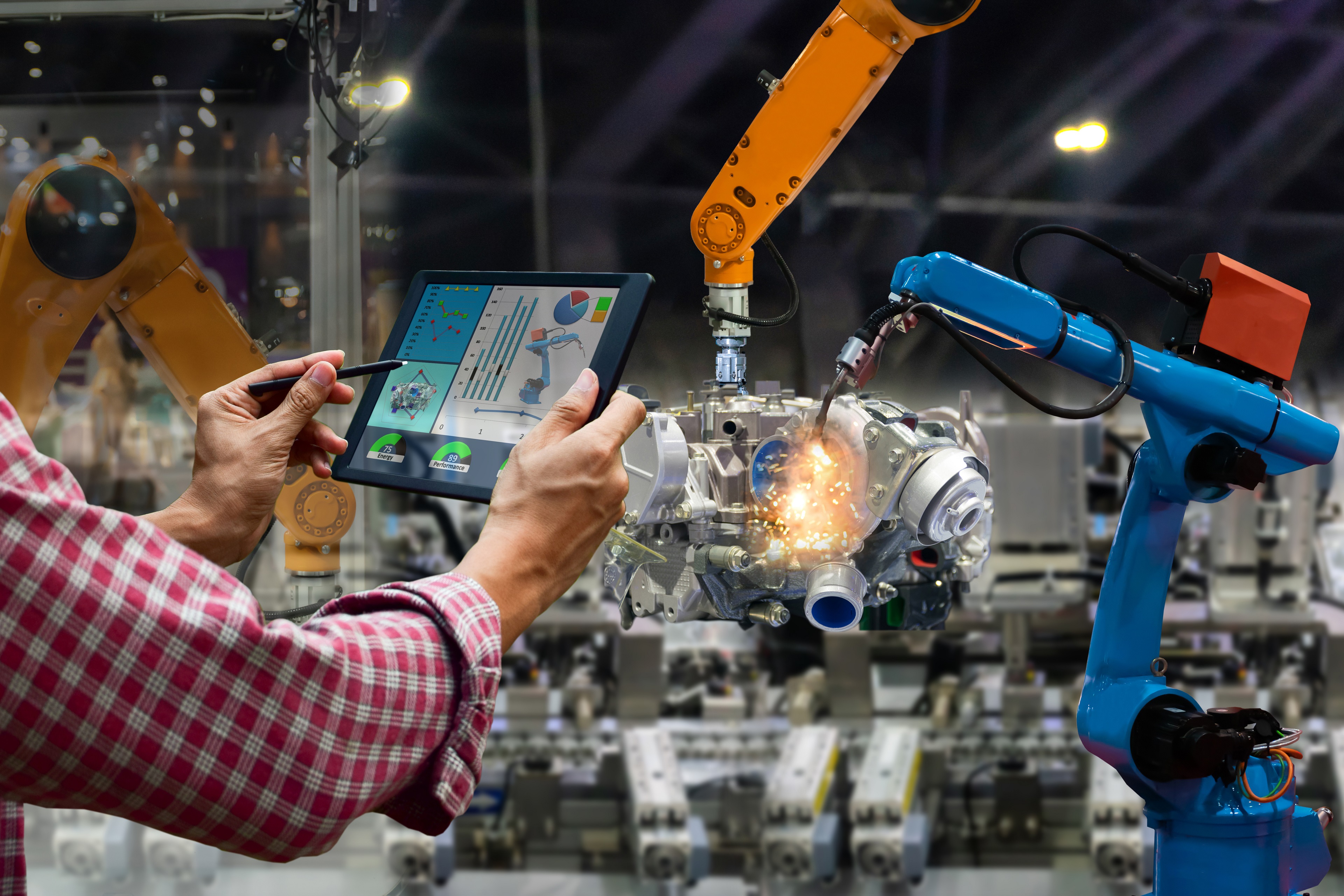EY refers to the global organization, and may refer to one or more, of the member firms of Ernst & Young Global Limited, each of which is a separate legal entity. Ernst & Young Global Limited, a UK company limited by guarantee, does not provide services to clients.

With data and interconnectivity at the forefront of Industry 4.0, EY is working with Procter & Gamble to showcase their world-class smart factory model for manufacturing automation and help businesses modernize for the future.
In brief
- Smart factories will be a critical next-wave contributor to the latest industrial revolution. They offer fresh opportunities for manufacturers and answers to issues plaguing the industry, like supply chain disruption and people shortages.
- But for companies looking to transform as they rebound from COVID-19 pandemic, knowing where to start and who to turn to for guidance can present its own challenges.
- EY and Procter & Gamble are working together, building out and integrating new people, process and technology dimensions and inviting those looking to make the leap to take a peek into their way forward.
In recent years, the manufacturing industry has experienced a baptism by fire. Called on as essential workers amid pandemic restrictions, and despite shortages and a disrupted supply chain, manufacturers were catapulted — out of necessity — into brave new processes, technologies and ways of working.
Forced to adapt, their actions spurred innovation and new ways of thinking that have industry experts questioning what’s next. In their rise from the ashes, there’s been increasing pressure to evolve manufacturing practices to meet the future. With production materials more readily available and concerns around talent continuing to mount, the sector is looking to define the “factory of the future” and determine a path forward for organizations rising to the challenge of manufacturing transformation.
Enter the “smart factory” — digitized facilities that pair modern technologies including artificial intelligence, robotics and the Internet of Things (IoT) with data and analytics. With interconnectivity and machine-to-machine (M2M) communication delivering efficient, agile and competitive operations, smart factories are reducing costs, improving productivity and reducing inventory and waste, and helping boost organizational performance in the market.
But smart technologies can be complex and expensive to implement. With similar investments designed to improve operational performance yielding less than stellar results over the past decade, however, there can be hesitation if smart factories are, indeed, the best solution.
The answer depends on whether Canadian manufacturers are willing to settle for “good enough” and incremental improvement. Or whether they’re looking to truly break through — as trailblazers in the fourth industrial revolution, or Industry 4.0 — to transform the future and their bottom line.
The IQ of IoT
Smart factories aren’t new. Nor are they all created equally. But with global smart manufacturing expected to nearly double to $658 billion by 2029, for many manufacturers, transitioning is not a matter of if, but when. But for companies looking to take the plunge, deciding where to start can be overwhelming.
Organizations — like EY — that have deep capabilities in manufacturing transformation have innovation centres, showcasing technologies and even mock product lines to help visualize what’s possible. But while technology is critical to the process, in many cases the bigger hurdle lies in having the right skills and capabilities to maintain the robotics and applications that users plan to build.
With the dust still settling from the “Great Resignation,” finding people with the right capabilities and a fresh mindset will be core to successful transformation. Yet according to Statistics Canada, half a million employees left the Canadian sector in the early 2000s, and there is speculation that manufacturing has experienced the biggest post-pandemic surge of attrition, with upwards of 60% of employees having exited the sector over the past couple of years.
Add to that an aging demographic at the helm preparing to retire, and manufacturing is facing an imminent labour shortage unlike any seen before. Never has there been a greater time to appeal to young job seekers — who are changing the way they think about work — with the more exciting job propositions that smart technologies can bring.
By eliminating repetitive, low-value work through smart technologies and upskilling teams to give employees new purpose, smart factories can create more attractive experiences employees are looking for, allowing teams to engage differently in the business and helping build a high-performing culture that attracts the next generation and retains top talent.
Getting there, however, will require a fulsome picture of what transformation can and should look like, and a comprehensive plan that integrates people, process and technology.
Proof in the pudding
A multi-pronged approach, factoring all three of these key elements, has been perfected by world-renowned, multinational consumer goods organization Procter & Gamble (P&G).
EY has worked alongside P&G as an alliance partner, combining Integrated Work Systems (IWS) and Supply Network Operations (SNO) capabilities with EY’s global supply chain and manufacturing performance improvement experience. Together, we’ve launched more than 400 smart factories by explicitly addressing the unique challenges facing each business — from planning, manufacturing and warehousing to distribution and customer-facing operations.
From bringing practice capabilities and closing performance gaps to embedding standard work and developing applications that employ IoT technologies, EY’s Smart Factory solution has been hailed as the new gold standard in deployment, which businesses considering digitization are looking to emulate. For those early in their journey, there is much to be learned from their experience. But where to start?
A fulsome approach
Many organizations dabbling in smart systems focus on technology — which is a critical component but only one piece of the manufacturing transformation pie. For a more fulsome approach, and to yield optimal outcomes for organizations driving sustainable manufacturing performance improvement, the following three steps should all be taken into consideration when building out a smart factory model.
1. Envision the future. Studios and innovation centres, like the EY-Nottingham Spirk Innovation Hub in Cleveland or MxD’s Digital Factory of the Future in Chicago, are great places to ideate and visualize the future before you act. Take time to familiarize yourself with proprietary technology and equipment, and how it’s supposed to work that’s what these spaces are for. But don’t stop there — a multi-dimensional approach aligning business outcomes to technology adoption is equally important, if not more important, to your journey.
2. Establish a reason to believe. Use others’ experiences to inform your transformation mindset. Innovation centres showcase creativity but they’re not pragmatic. EY has helped deliver 400+ transformations and we have a number of sites available where transformation is showcased. Touring a smart factory and seeing it in practice is often the “aha” moment clients need to course-correct — realizing, perhaps, that they missed people and culture in their efforts to enable technology. Talking to real operators who are making products for real customers reminds them of their destination. And visiting more than once brings continuous learning along their change journey.
3. Define the shared path forward. Ensure organizational alignment by getting consensus and a shared vision for the future. A recent report by Gartner shows that one of the biggest challenges when developing a vision for change is business leaders not understanding the possibilities. Gather perspectives from across the organization, regardless of their come-from state, to help piece together and enable change and paint the picture. Go beyond use case to understand how people and process fit together and get leadership on board early. It can be challenging to overcome experience bias of how things have “always been done.” When converting “wrenchturners” to knowledge workers, the biggest barrier is often getting leaders on board, as many climbed the ranks through similarly mechanical roles. Finance may also raise flags but recruiting leaders can quantify the cost of attrition as part of decision-making.
While experience has shown that businesses can move forward by applying only one or two of the approaches, completing all three can be a powerful accelerator when embarking on transformation and help deliver more comprehensively on your vision.
While a significant culture shift may be required as you transfer ownership to those running the robots or deciphering data, building a high-performing culture will demand teams that are both engaged in the technology and involved in the process. First-hand experience of the many benefits smart technologies bring can also help spur onward progress. While you may have transitioned to making digitally connected, electric cars in a smart, newly digitized factory, the next logical step may be to make those components in a sustainable way or do more with less.
A possible fourth step to keep on the radar is to build on learnings and evolve your progress by visiting a leading-class environment and top-performing site. This is where the P&G experience can help. As a result of EY’s exclusive alliance with P&G, a renowned leader in this space, we encourage others pursuing smart factory aspirations to join P&G for tours of their Canadian facilities and shadow their teams for a day.
Consider facilities like P&G’s Always plant, located in Belleville, Ontario. More than dummy lines or untested concepts, the plant is transformation in progress, delivered at scale. Combining people, process and technology dimensions in an integrated manner, P&G’s Integrated Work System (IWS) is the heart of the organization’s model, focused on continually improving how people work, with technology seen as an accelerator that expands and extends the impact of IWS. It’s a model that has supported the success of P&G smart factories around the world — making both their equipment and teams smarter. And it showcases approaches that EY’s visiting clients have applied in their own factories, creating mini-sites or lines that were built out and expanded to other sites as their comfort grew.
P&G takes great pride in demonstrating their capability and encouraging others to follow suit. And observing how far they’ve come over the past few years as a world-class manufacturer may be exactly the motivation needed to implement smart technologies in a way that best fits your business, focuses your journey and gets you primed and ready for what the future might bring.
Summary
Manufacturing is facing a fourth industrial revolution. Organizations looking to thrive in the coming century will need to be agile, connected and continually evolving to meet an uncertain future. Smart factories will be key to remaining competitive and unlocking potential in a world dominated by data, but a fulsome approach to planning will be critical to shifting a deep-seated culture and accelerating transformation in the years to come.
Related articles
Four ways manufacturers can deploy SAP to improve results
Considerations for manufacturing companies to make progress on the SAP journey for business transformation.
Top tips for Canadian manufacturers on clean technology tax credits and government incentives
Considerations for the manufacturing and mobility sector on how to take advantage of new clean technology tax credits.
Personalize tech transformation, unleash greater potential
It’s time for the manufacturing and mobility sector to boldly realign technology transformation with strategic and long-term business goals.






